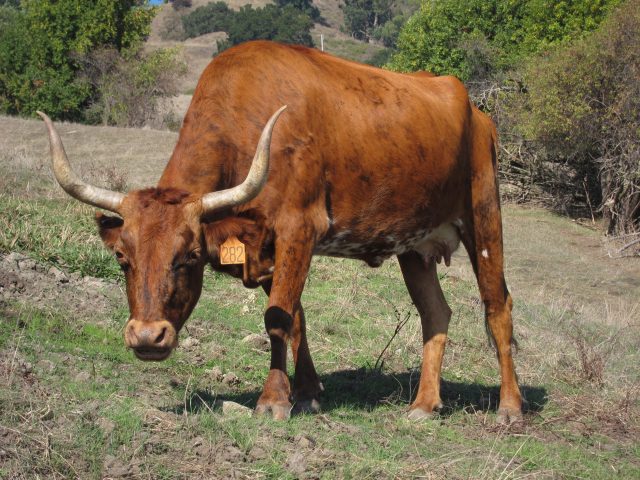Type the name of the breed you're looking for below
[wpdreams_ajaxsearchlite] Don't see the breed your're looking for? Click here and let us know!
Corriente cattle
| Place of Origin | Spain |
| Origin | The Corriente can be traced back to the first cattle brought to the new world by the Spanish as early as 1493. These cattle were hardy breeds chosen especially to withstand the ocean crossing and adapt to their new land. They were brought to the West Indies and south Florida, as well as to Central and South America. Over the centuries the descendants of these cattle bred for different purposes - milk, meat and draft animals. They also adapted through natural selection to the various regions in which they lived. Eventually, their descendants spread across the southern U.S. and up the coast of California. In the early 1800's, European and other breeds were introduced to the new world, and by the 1900's many ranchers in the Americas were upgrading their herds with modern beef cattle. Nearly pure descendants of the original Spanish cattle almost disappeared, but some managed to survive with little human care or intervention in remote areas of Central and South America, and in very limited numbers in some areas of the southern U.S. Today there is evidence of a worldwide growing interest in preserving various strains of these hardy, native cattle. Cattle associations in Spain, South America and Florida are making efforts similar to the N.A.C.A.'s to recognize their attributes, though few actually support registries. The Name "Corriente": In Central and South America, the various descendants of the early Spanish cattle are generally referred to as "Criollo." In parts of northern Mexico, they are often called "Corriente," although this term is frequently used for any small cattle of indiscriminate breeding and not just for the type of cattle recognized by the N.A.C.A. "Corriente" became the moscorriente-web-2.jpgt common term used at the border to refer to the cattle purchased for rodeo use. Consequently, most North American cattlemen, ropers and doggers know this name, and it was chosen by the founders of the N.A.C.A. to be used for this registry. |
| Purpose | They are primarily used today as sport cattle for rodeo events such as team roping and bulldogging (steer wrestling). Some breeders raise them for their meat, which is significantly leaner than the meat from most modern beef cattle. They were formally used for dairy and draft (working) as well. |
| Appearance | They are lean and athletic. They come in a variety of colours. |
| Horns | They have long upcurving horns. |
| Bulls Average Weight | 450 kg (992 kg) |
| Other Considerations | They are known as "easy keepers," as little human intervention is required in their calving, and they eat significantly less than the big beef cattle. They require less water and can live on sparse open range. Corrientes are also known as accomplished escape artists, as they can leap a standard barbed-wire fence and squeeze through fairly small openings. |



